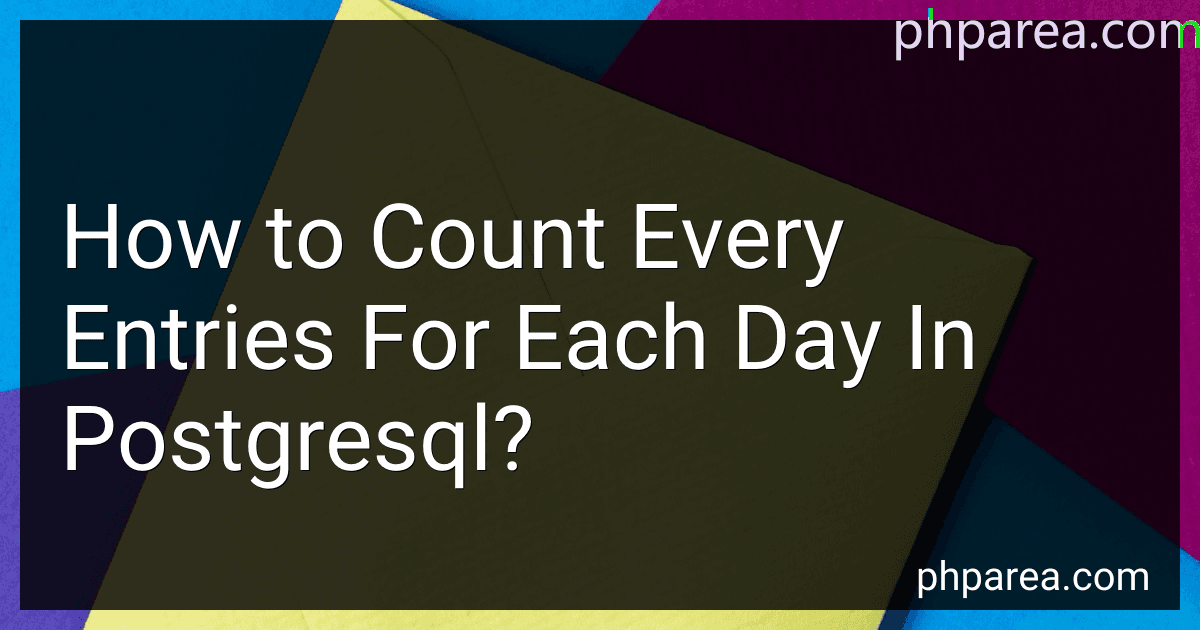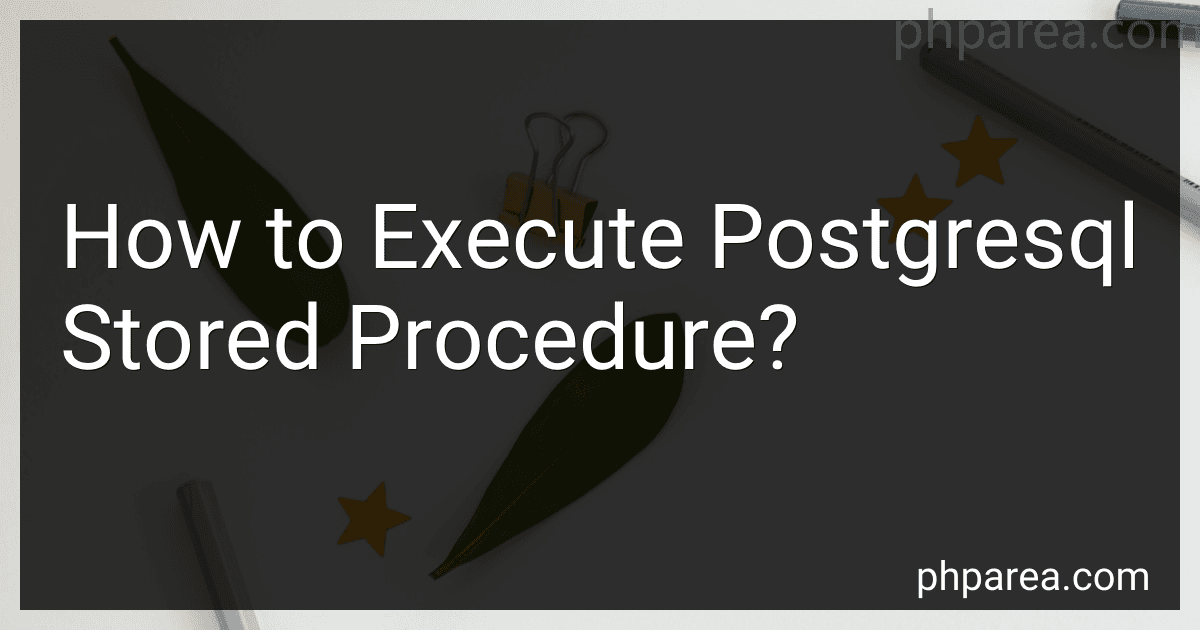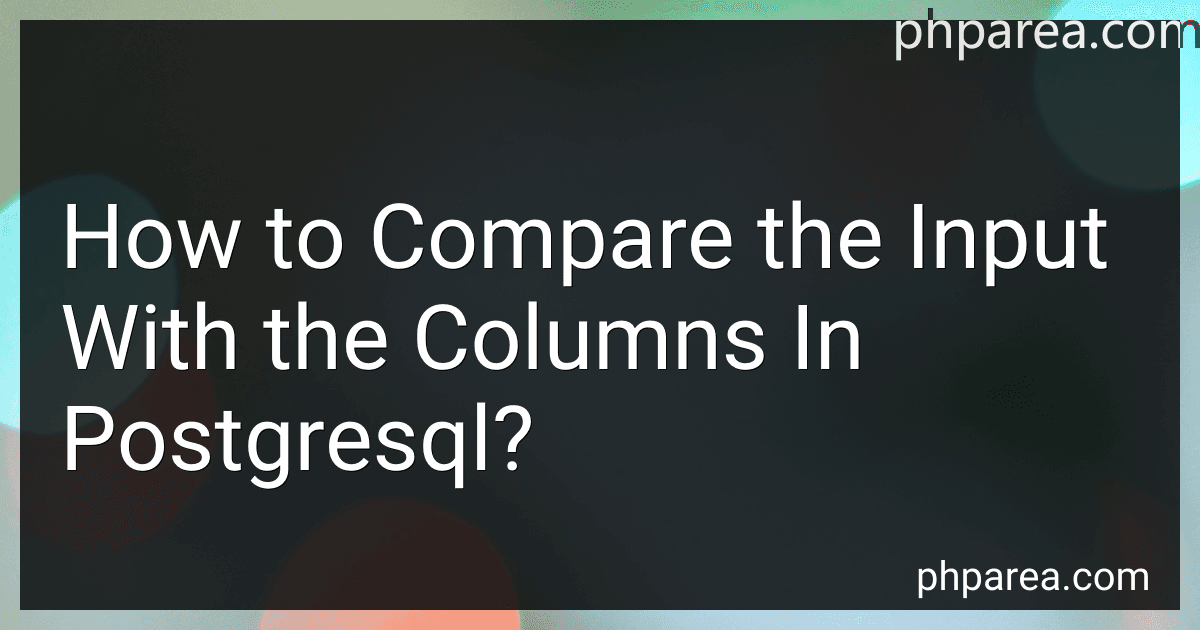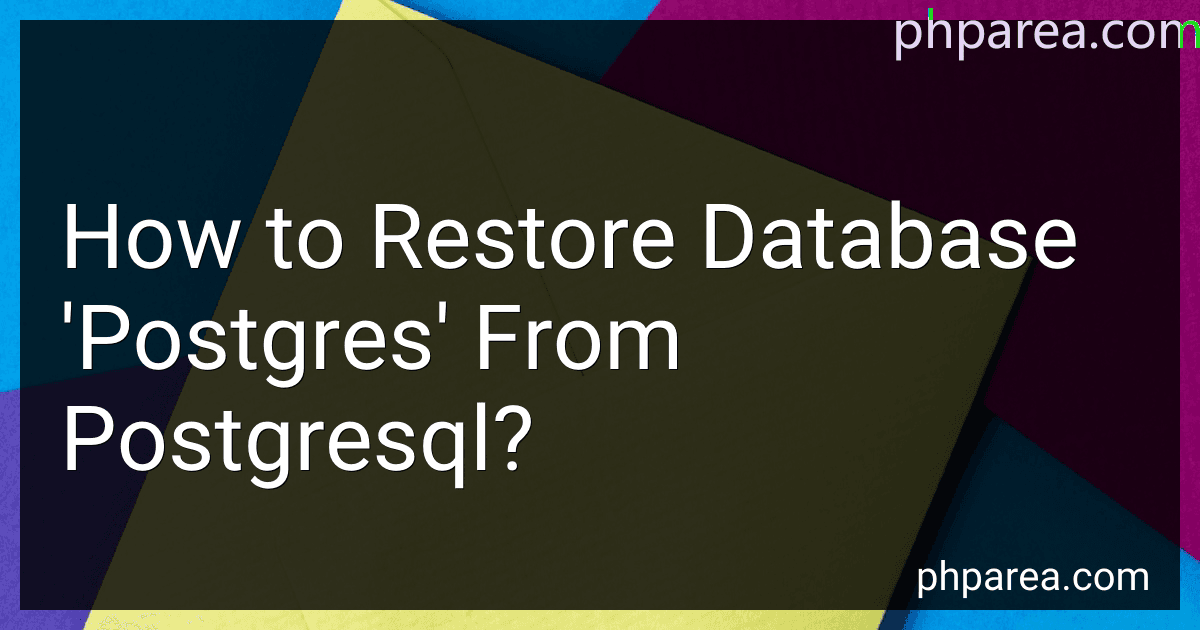Posts (page 11)
-
 3 min readIn PostgreSQL, you can convert a bigint value representing a timestamp into a formatted date string using the TO_TIMESTAMP function along with the TO_CHAR function.First, you need to cast the bigint value to a timestamp using the TO_TIMESTAMP function. For example, if your bigint value is stored in a column named "timestamp_column" in a table called "example_table", you can convert it to a timestamp like this:TO_TIMESTAMP(example_table.
3 min readIn PostgreSQL, you can convert a bigint value representing a timestamp into a formatted date string using the TO_TIMESTAMP function along with the TO_CHAR function.First, you need to cast the bigint value to a timestamp using the TO_TIMESTAMP function. For example, if your bigint value is stored in a column named "timestamp_column" in a table called "example_table", you can convert it to a timestamp like this:TO_TIMESTAMP(example_table.
-
 4 min readTo count every entry for each day in PostgreSQL, you can use the GROUP BY clause in combination with the COUNT function. By grouping the entries by the date field and then using COUNT, you can easily determine the number of entries for each day. Remember to also include the appropriate date formatting function to extract the date from the timestamp column if needed. Additionally, you can further filter the results by specific dates or date ranges by using the WHERE clause in your query.
4 min readTo count every entry for each day in PostgreSQL, you can use the GROUP BY clause in combination with the COUNT function. By grouping the entries by the date field and then using COUNT, you can easily determine the number of entries for each day. Remember to also include the appropriate date formatting function to extract the date from the timestamp column if needed. Additionally, you can further filter the results by specific dates or date ranges by using the WHERE clause in your query.
-
 5 min readTo select from a variable in PostgreSQL, you first need to declare and set the variable using the PL/pgSQL language. This can be done using the := operator. Once the variable is set, you can then use it in your SQL query by referencing the variable name.
5 min readTo select from a variable in PostgreSQL, you first need to declare and set the variable using the PL/pgSQL language. This can be done using the := operator. Once the variable is set, you can then use it in your SQL query by referencing the variable name.
-
 8 min readIn PostgreSQL, you can use multiple partitions to store your data in a more organized manner. This can help with managing large amounts of data more efficiently. To use multiple partitions in PostgreSQL, you first need to create a partitioned table. This table will act as the parent table for your partitions.Next, you need to create child tables that will hold the actual data for each partition.
8 min readIn PostgreSQL, you can use multiple partitions to store your data in a more organized manner. This can help with managing large amounts of data more efficiently. To use multiple partitions in PostgreSQL, you first need to create a partitioned table. This table will act as the parent table for your partitions.Next, you need to create child tables that will hold the actual data for each partition.
-
 3 min readTo select from a variable in PostgreSQL, you can use the SELECT statement along with the variable name. You need to declare the variable first using the DO $$ syntax. Then you can assign a value to the variable within the PostgreSQL PL/pgSQL block. Once the variable is defined and assigned a value, you can use it in your SELECT statement to retrieve data from the database based on the variable's value.
3 min readTo select from a variable in PostgreSQL, you can use the SELECT statement along with the variable name. You need to declare the variable first using the DO $$ syntax. Then you can assign a value to the variable within the PostgreSQL PL/pgSQL block. Once the variable is defined and assigned a value, you can use it in your SELECT statement to retrieve data from the database based on the variable's value.
-
 6 min readTo execute a PostgreSQL stored procedure, you can use the CALL or SELECT statement depending on the return type of the procedure. If the procedure returns a result set, you can use the SELECT statement to execute it. For example: SELECT * FROM my_stored_procedure();If the procedure does not return a result set, you can use the CALL statement to execute it. For example: CALL my_stored_procedure();Make sure to replace my_stored_procedure with the actual name of your stored procedure.
6 min readTo execute a PostgreSQL stored procedure, you can use the CALL or SELECT statement depending on the return type of the procedure. If the procedure returns a result set, you can use the SELECT statement to execute it. For example: SELECT * FROM my_stored_procedure();If the procedure does not return a result set, you can use the CALL statement to execute it. For example: CALL my_stored_procedure();Make sure to replace my_stored_procedure with the actual name of your stored procedure.
-
 4 min readTo compare the input with the columns in PostgreSQL, you can use various SQL operators and functions. You can use the equality operator (=) to compare the input value with a specific column in a table. You can also use the LIKE operator to compare the input value with a column that contains a specific pattern. Additionally, you can use the IN operator to check if the input value exists in a list of values stored in a column.
4 min readTo compare the input with the columns in PostgreSQL, you can use various SQL operators and functions. You can use the equality operator (=) to compare the input value with a specific column in a table. You can also use the LIKE operator to compare the input value with a column that contains a specific pattern. Additionally, you can use the IN operator to check if the input value exists in a list of values stored in a column.
-
 4 min readIn PostgreSQL, you can get the current time in a specific time zone by using the AT TIME ZONE function. This function allows you to convert a timestamp from one time zone to another.For example, if you want to get the current time in New York (Eastern Standard Time), you can use the following query: SELECT current_timestamp AT TIME ZONE 'America/New_York'; This will return the current time in New York.
4 min readIn PostgreSQL, you can get the current time in a specific time zone by using the AT TIME ZONE function. This function allows you to convert a timestamp from one time zone to another.For example, if you want to get the current time in New York (Eastern Standard Time), you can use the following query: SELECT current_timestamp AT TIME ZONE 'America/New_York'; This will return the current time in New York.
-
 6 min readTo restore a database named 'postgres' from a PostgreSQL backup, you can use the pg_restore utility. First, you need to have a backup file that was created using the pg_dump utility. Once you have the backup file, you can run the pg_restore command with the following syntax:pg_restore -d postgres -U <backup_file>In the above command, replace with the username of the PostgreSQL user with the necessary permissions to restore the database.
6 min readTo restore a database named 'postgres' from a PostgreSQL backup, you can use the pg_restore utility. First, you need to have a backup file that was created using the pg_dump utility. Once you have the backup file, you can run the pg_restore command with the following syntax:pg_restore -d postgres -U <backup_file>In the above command, replace with the username of the PostgreSQL user with the necessary permissions to restore the database.
-
 3 min readIn PostgreSQL, you can create a specific date by using the DATE function along with the desired year, month, and day values. You can specify the date manually by providing values for year, month, and day in the following format: DATE 'YYYY-MM-DD'. For example, to create a specific date for January 1st, 2022, you can use the following query: SELECT DATE '2022-01-01';. This will return the specified date in the output.
3 min readIn PostgreSQL, you can create a specific date by using the DATE function along with the desired year, month, and day values. You can specify the date manually by providing values for year, month, and day in the following format: DATE 'YYYY-MM-DD'. For example, to create a specific date for January 1st, 2022, you can use the following query: SELECT DATE '2022-01-01';. This will return the specified date in the output.
-
 3 min readTo work with time intervals in PostgreSQL, you can use the interval data type. This type allows you to store time durations in a flexible manner. You can perform mathematical operations on time intervals such as addition, subtraction, multiplication, and division. Time intervals can be used in queries to filter data based on time durations or to calculate the difference between two timestamps.
3 min readTo work with time intervals in PostgreSQL, you can use the interval data type. This type allows you to store time durations in a flexible manner. You can perform mathematical operations on time intervals such as addition, subtraction, multiplication, and division. Time intervals can be used in queries to filter data based on time durations or to calculate the difference between two timestamps.
-
 5 min readTo check for column attributes in PostgreSQL, you can use the following query:SELECT column_name, data_type, character_maximum_length, is_nullable FROM information_schema.columns WHERE table_name = 'your_table_name';This query will provide information about the columns in the specified table, including the column name, data type, maximum length (if applicable), and whether the column allows NULL values.
5 min readTo check for column attributes in PostgreSQL, you can use the following query:SELECT column_name, data_type, character_maximum_length, is_nullable FROM information_schema.columns WHERE table_name = 'your_table_name';This query will provide information about the columns in the specified table, including the column name, data type, maximum length (if applicable), and whether the column allows NULL values.